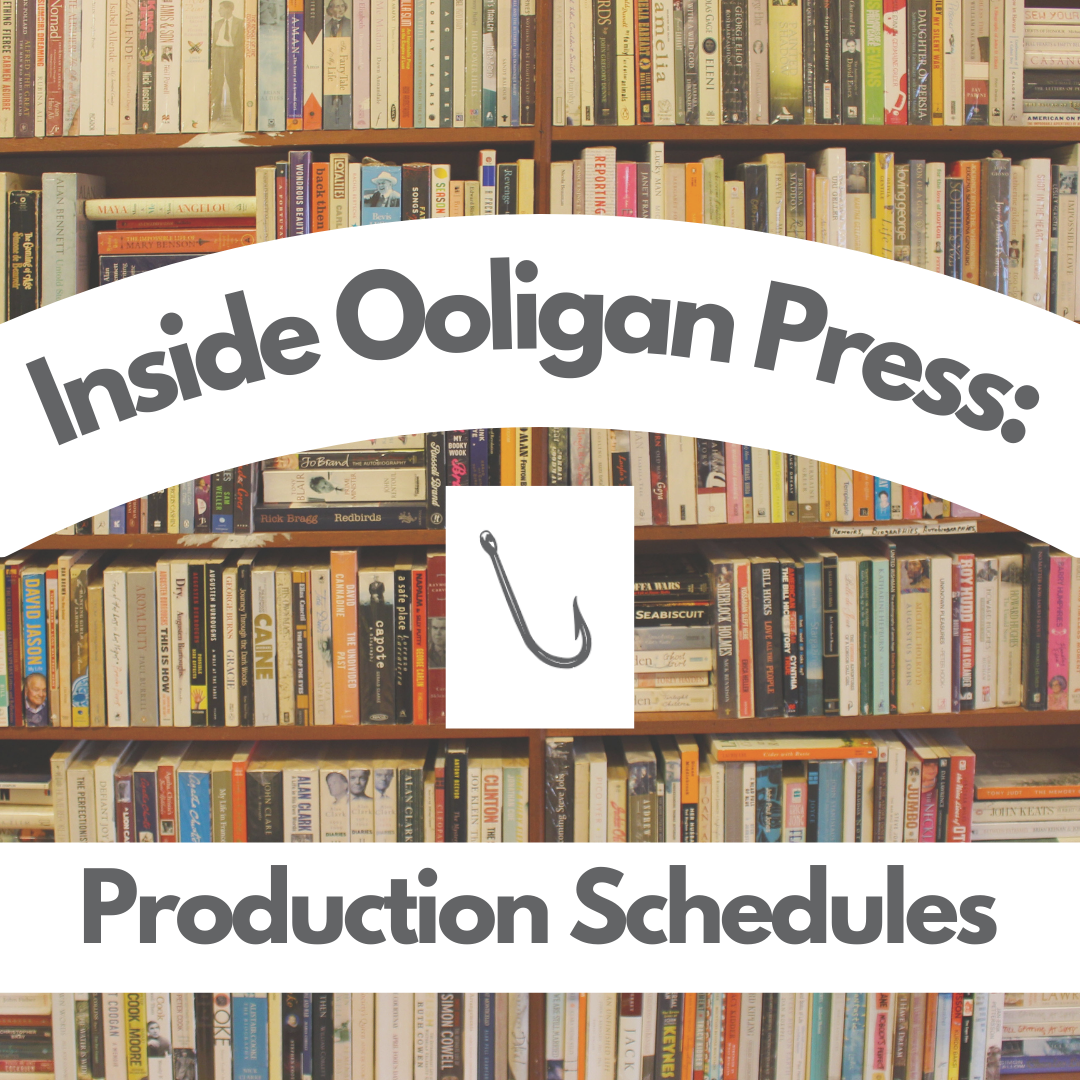One of the most common questions we get about publishing is this: why does it take so long to publish a book? A typical production cycle for a traditional publisher is between nine months and two years. (The length of time can vary depending on the size of the publishing house and its staff, how far out the acquisitions calendar is planned, what type of book is being published, and many other factors.) Let’s take a look at what goes into that time, using our own production schedule at Ooligan Press as an example.
First, we need to find and acquire a manuscript. (You can read some insights about that process here and here. Acquisitions is an ongoing process at Ooligan Press; we publish four books a year, based around the academic calendar of Portland State University. Usually, our fall title is non-fiction, we publish one literary fiction in the winter, and then we have two titles in the spring—one YA and one in partnership with the Multnomah Library Writers’ Project. Of course, that schedule sometimes shifts, and like many businesses, we are still working to catch up and get back on track from the effects of the pandemic shutdown in 2020 and 2021.
Once we have our manuscript chosen, it goes into production according to a very detailed schedule. There are lots of different project management tools out there; at Ooligan, we use a template to create a shared spreadsheet for each title. The spreadsheet is coded with date dependencies and a “work-back” schedule. That means that every single task associated with the title (no matter how small) is listed and assigned a date for completion. It also means that we have a good overall view on how the tasks interface with each other, when each milestone must be met, and what happens if any of the puzzle pieces are delayed. At our press, we have identified about 230 discrete actions that need to be completed for each title across different departments, including Acquisitions, Editorial, DEI, Operations, Digital, Design, Marketing, Publicity, and Online Content.
Many publishing tasks begin as soon as a title is chosen for the book, nearly a year ahead of the publication date. Long-range tasks include marketing and publicity, which start in earnest about nine months ahead of publication; cover and interior design, which must be done about ten months before the publication date after all editorial tasks are done; and metadata entry, which occurs at least nine months before publication. All these different jobs are needed to support the actual production and distribution of each book. It’s possible to compress some of these timelines, particularly if a publisher is working on a book that is particularly topical or time-sensitive. But many of these necessary items are external to the publisher, and can’t be expedited.
By the time we are four to six months out from the “book birthday,” most of the production tasks are done and the files are being prepped for printing and e-book production. Lead times for printing and shipping books have been steadily increasing in the past few years and it’s crucial that we build in a cushion of time, in case of misprints or shipping errors. In the remaining time, we continue to work on publicity, planning the book launch, and conducting a social media campaign. This is also typically when a book project team transitions into working on a new title . . . and the cycle continues.
Book production is complex, with many small but critical tasks, and many dependencies that add up to many months of work. As a student-run press with a different “staff” each term, using a standardized shared production calendar helps keep us on track over the long process of bringing a book to life.

